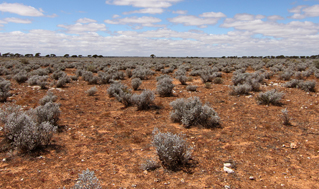OCT
2025 Update - if you are seeking to run a
trip to the Nullarbor please email
asf.caves.nsig@gmail.com
regarding changes to access requirements.
Exploration and the Nullarbor SIG Trip/Activities Register
Are you heading off to the Nullarbor to
do some caving and/or research? Would you like to know who is
already out there, or is planning to go so you can pick their brains
or meet up with them? Do you already have a trip planned, but would
like more members to join? Would you like to know who has been out
there in the last few years so you can ask them some questions? This
is where the Nullarbor Activities Register comes in.
 Please
note that your newly added trip/activity may take 24-48 hours to
appear on the registry list.
Please
note that your newly added trip/activity may take 24-48 hours to
appear on the registry list.
If you are a Nullarbor SIG member, please
login
to view the triplist database (you will be asked for a username and
password - please email
asf.caves.nsig@gmail.com
if you have not been given this information).
Planning a Nullarbor Expedition
Heading out to the Nullarbor - even if you just stick to the
one main road - is a serious undertaking. It
is a vast, arid area which is sparsely populated and has extremely
limited resources available to the public. All food and water needs
to be brought in from elsewhere. There are very
few places to buy fuel, water and food along the way and those few
places that exist are very expensive. If you are crossing state
lines you will also need to be aware of import restrictions for
fruit and vegetables. If heading away from the main road (as most
expeditions do!), we strongly recommend you hire a satellite phone
if you don't own one. For more information about what is needed in
the Nullarbor and advice on planning and equipment, please have a
look at the information below.
Border Quarantine Considerations
If
you are travelling to the Nullarbor from the east, you will pass
through a WA Quarantine Station at the WA border where you will be
required to surrender any 'quarantine-risk material'. Your vehicle
may be searched and you will at least have to show the Quarantine
Officer the contents of your fridge at a minimum. Please refer to https://www.agric.wa.gov.au/exporting-western-australia/quarantine-information-private-travellers for
further information. There is very little food (apart from snacks
and take-away) that can be bought from Roadhouses along the
Nullarbor.
Most caving groups have at least 1 fridge and regular Nullarbor
travellers will each have a fridge in their 4WD vehicles. If you
cannot afford 2 fridges or a freezer/fridge combo, we recommend you
put your fridge unit in freezer mode, and have a separate esky for use as a
fridge. Bottles of water can be frozen and swapped out to use as
cold bricks in the 'fridge'. In this way leftover food, cold meats
and cheeses can avoid being frozen solid.
Weather Implications
The Nullarbor is a region of great variability in weather. Whilst it
is generally hot and dry in summer, low fronts can bring severe rain
storms dumping large amounts of rain in a short period of time. This
has implications for flooding, impacting on being able to travel on
tracks as well as safety implications for caves prone to flooding.
Winter is usually much colder with overnight temperatures reaching
freezing point at times.
Tracks
Many tracks marked on maps are overgrown and no longer visible,
whilst on the other hand new tracks not recorded on maps have been
made. Always make sure you have a GPS and check locations if at all
unsure. It is highly recommended not to drive on flooded tracks as
the potential for bogging and serious damage to the track is great.
Most station owners/managers will not give permission to travel on
their stations if severe weather is forecast. Always check
beforehand. 4WD vehicles with good clearance are recommended as
tracks can get quite rough. Whilst 2WD vehicles with good clearance
will get you some places, you will have to wait until tracks are
completely dry to drive if there is any rain. Caravans and camper
trailers are not recommended beyond well maintained tracks.
Terrain
The Nullarbor is primarily made up of ranges of low ridges and
swales, with some anomalies. There are
sections of lightly wooded areas on top of ridges and large areas of
low scrub on the clay pans (swales) in between. This
scrub
constitutes the grey-green saltbush and the
blue-green bluebush. Bluebush is very slow growing and hence has
an extremely dense branching system. Driving over bluebush will
greatly increase the chance of destroying your tyres and is to be
avoided at all costs. Across the ridges and in some of the swales,
there are hard, sharp limestone rocks which can be hidden in the
scrub. It is safest to stick to tracks where possible. It is also
recommended each vehicle take at least two spare tyres, a puncture
repair kit, and a good quality air compressor to reinflate tyres
after any punctures.

Typical tyre-destroying Nullarbor
vegetation
Water
There is no water available to the public on the Nullarbor. All
water must be brought in. It is recommended to allow 3-4L per person
per day for drinking, cooking and washing purposes. Tinned
food can be helpful in this regard, in spite of the extra weight,
for it contains its own cooking liquid. A good supply of wet wipes
can be helpful for wiping dusty hands and utensils.
Applying for Permits and Access to Properties
The Nullarbor SIG can
help you plan your next trip and put you in contact with the right
people. Please email
asf.caves.nsig@gmail.com
for help with how to get started. Planning should start at least 6
months in advance, so please don't put off contacting landowners or
arranging permits until the last minute. We hope to have this
information available for SIG members soon via a login on this
website.
Cave Diving on the Nullarbor Plain
On the surface it appears to be an arid desert, and yet Nullarbor
has some of the most spectacular cave dives in Australia. Even more
than a dry caving expedition, the logistics of a Nullarbor diving
trip can approach epic proportions. ASF clubs and members have been
exploring the underwater caverns of the Nullarbor for decades and
have extensive experience in planning diving trips to this remote
area. Please visit the Cave
Diving Commission of the ASF for more information.
Title photo: Bunda Cliffs 2018. Cathi
Humphrey-Hood
|






